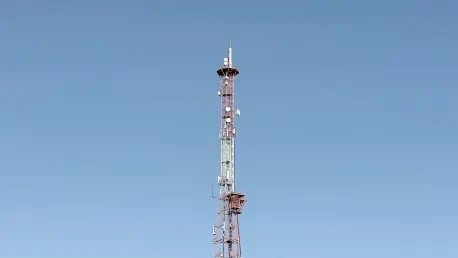Imagine a world where a farmer in a remote corner of sub-Saharan Africa can monitor crop health in real-time, or a logistics company can track shipments across vast oceans without a single connectivity gap. This vision of seamless global interaction is no longer a distant dream but a tangible reality thanks to groundbreaking advancements in 5G IoT technology powered by low-Earth orbit (LEO) satellites. A pioneering collaboration between a Barcelona-based satellite communications startup and a leader in low-power cellular IoT solutions has recently demonstrated a successful end-to-end 5G IoT connection using LEO satellites. This achievement marks a significant leap forward in bridging the digital divide, particularly in regions where terrestrial networks are absent. With roughly 75% of the planet’s landmass lacking cellular coverage, this innovation promises to extend the reach of Internet of Things (IoT) and machine-to-machine (M2M) applications to the most isolated areas, setting the stage for a revolution in how industries operate on a global scale.
Unlocking Remote Regions with Satellite Innovation
The core of this technological breakthrough lies in the ability to transmit messages seamlessly using low-power cellular IoT modules connected to LEO satellites, mimicking the roaming experience of traditional mobile networks. This integration of satellite and terrestrial systems eliminates the need for hardware modifications, making it a cost-effective solution for widespread adoption. By acting as orbiting cell towers, LEO satellite constellations enable direct-to-device 5G connectivity that adheres to NB-IoT standards, ensuring compatibility with existing technologies. This advancement directly tackles the long-standing challenge of providing harmonized coverage across the globe, especially in underserved areas. Industries such as agriculture, logistics, mining, energy, and environmental monitoring stand to benefit immensely, as devices in remote locations can now communicate critical data without reliance on ground-based infrastructure. The potential to manage devices and access location services through cloud platforms further enhances the practicality of non-terrestrial network (NTN) communications for real-world applications.
Pioneering a New Era of Industry Transformation
Reflecting on the impact of this milestone, the successful demonstration of 5G IoT connectivity via LEO satellites proved to be a game-changer for global industries. The ability to deploy low-power devices with satellite links opened doors for scalable solutions across diverse sectors like defense, cybersecurity, telecommunications, and critical infrastructure. European innovation took center stage in this endeavor, with ambitions to democratize space-based connectivity and challenge existing paradigms in the market. The strategic importance of this achievement was underscored by substantial investments and a growing client base, with hundreds of contracts spanning dozens of countries signaling strong commercial traction. Looking ahead, the focus must shift to expanding satellite constellations and refining cost structures to ensure accessibility for smaller enterprises. Collaborative efforts between technology providers and industry stakeholders will be crucial in driving adoption, while policymakers should consider frameworks to support the integration of satellite and cellular networks for a truly connected future.









